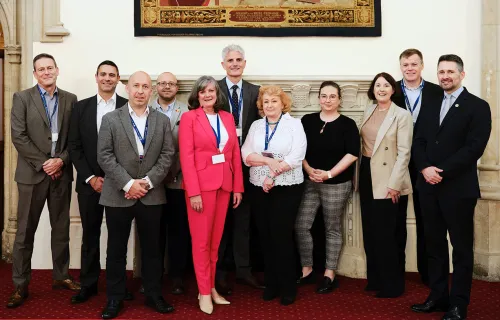Retail crime is not just a few items getting shoplifted. It’s a violent crime phenomenon and the UK’s retail employees are in the front line. According to a recent report by City University of London, commissioned by the Co-op, the rise in violent retail crime is causing shop workers to suffer "long-lasting anxiety and post-traumatic stress disorder".
The scale of retail crime epidemic is shocking: every day, 115 retail employees are attacked at work. The 2019 British Retail Consortium’s (BRC) Retail Crime Survey, part-based on official government crime data, concludes that “retail is the industry sector which suffers the most crime by some distance.”
Besides the human cost, retail crime is estimated to place a £1.9 billion burden on shop owners – this at a time when they are struggling with massive transformation on the High Street as shoppers move to e-commerce.
Crucially, this kind of criminal activity is only part of the growing wave of organised and gang-related crime, including county lines where younger vulnerable people are manipulated into committing thefts.
Police are all too aware of the growing retail crime wave – but face their own challenges, including historically low levels of police officers in England and Wales and a nationwide rise in all violent crime, with knife crime at its highest level since records began.
Not surprisingly, the majority of retailers (70%, in the BRC’s Retail Crime Survey) are dissatisfied with the police response and are having to take the initiative by, for example, collecting their own data on frequent offenders or spending around £1 billion on installing CCTV.
A united response is an effective response
Retailers and the police are united in their determination to tackle the retail crime wave, and protect shop workers from violence and abuse. But they are not taking a united approach. Retailers collect valuable data about incidents and offenders but then do not share it in comprehensive way with other retailers. Nor do they share it with the police.
It’s clear that there needs to be more collaboration between retailers and the police, with these stakeholders pooling their information. Only then, can they mount an effective, intelligence-led fight-back against retail crime. With this approach, the police can identify, target and arrest the heads of criminal gangs. These are the ringleaders who mastermind misery: removing them from the streets will immediately disable the gangs and, most importantly, prevent further violent harm and theft.
In today’s connected world we believe that a united and joined up, intelligence-led response to retail crime will be an effective response. To make it happen, there needs to be a national dialogue that involves retailers, the police and the government about how they can collaborate, and over what information they need to share. Retail crime is imposing a growing and unacceptable cost on our society: retailers, police and government need to be working together to find a solution.
CGI has unrivalled experience in helping the UK’s law enforcement agencies to join the dots, enabling intelligence-led policing. We provide the expertise and technology to meet the challenges of 21st Century crime.
In our next blog we will continue to explore how joining the dots between law enforcement agencies and the private sector can continue to safeguard the most vulnerable in UK society.
Learn more about CGI in Police and law Enforcement.





